

| The obsession with the ball game is seen in the large number of ballcourts at the site. Some are almost 200 feet long, formed by two facing walls in stone, battered or vertical. The playing of this game as a ritual event served also as a controlled reenactment of war. | 
|
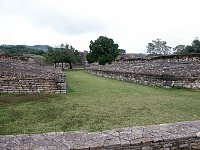
|
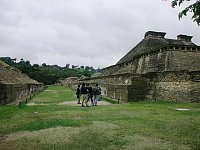
|
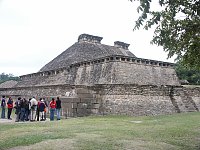
|
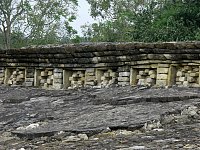
|
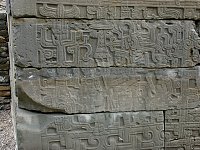
|
Relief panelSix relief panels form a kind of narrative on the interior wall of the ballcourt. The first depicts a ballplayer readying himself for the ritual game. The end, seen below, depicts the finish of the game when one player drives a knife into the chest of the other. I would welcome contributions of the other reliefs in the series to include on this page. |
|
Relief panel (northeast corner) depicting the end of the gameOne player is held while another drives a knife into his chest. The Tajín rain god is on the right while a death god descends from the border above to receive the offering. |
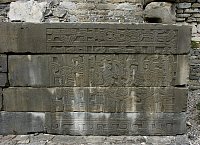
|
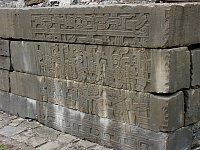
|
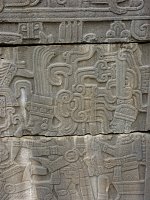
|
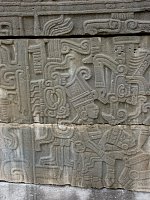
|
Left: the rain god looks on; center: a companion holds the sacrificial victim while a god descends to take the heart (?)In this relief the ball players wear the common paraphernalia--yokes fitted around the waist and palmas inserted into the yokes at the waist and extending upwards. |
Center:another skeletal death god rising up; |
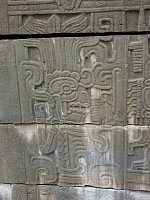
|

|
 Return to the El Tajín Index
Return to the El Tajín Index
 Go to the Mexico Index.
Go to the Mexico Index.
 Click here to return to index of art historical sites.
Click here to return to index of art historical sites.
 Click here to return to index of artists and architects.
Click here to return to index of artists and architects.
 Click here to return to chronological index.
Click here to return to chronological index.
 Click here to see the home page of Bluffton University.
Click here to see the home page of Bluffton University.

